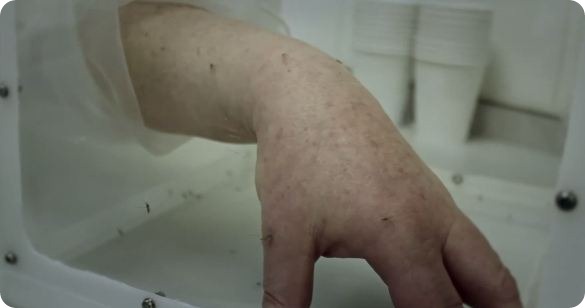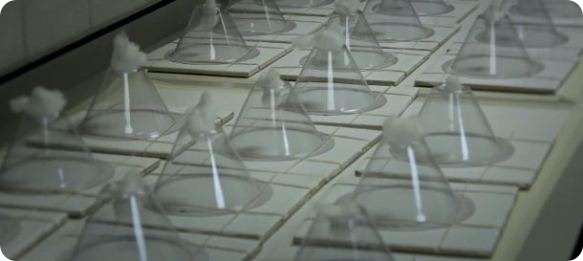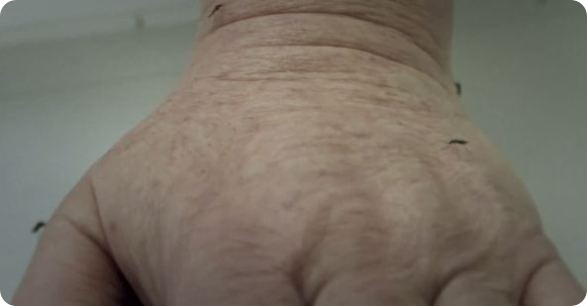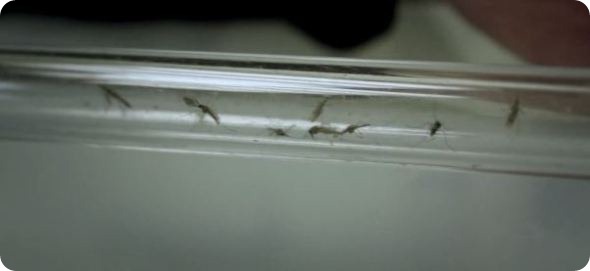
Video title: Malaria control: an interview with Dr Jo Lines
Run time: 11:09 mins
Dr Jo Lines - Malaria Control
Video by AZoTV
What is malaria and who does it affect?
Malaria is a tropical, mosquito-borne disease. It is found all over the tropics, in every continent but diminished now a great deal in most of Latin America, most of Asia. Still 90% of the world’s deaths due to malaria are in Africa and most of them are in young children in Africa.
What are the main issues in malaria control?
Well we’ve been having some success controlling malaria, we’ve made a great deal of progress over the last few years and that progress is mainly built around insecticide-treated nets. This is a technology that we invented in the 80’s of putting a very safe class of insecticides, pyrethroid insecticides, impregnated on to mosquito nets and that gives us a method of mosquito control that can reduce people’s exposure to malaria by perhaps two orders of magnitude – it is very good protection. This is completely reproducible, so you can have a factory turning out these things out in the 10’s of millions and they can be used almost anywhere in almost all circumstances.

Because of the availability of that technology, investments in malaria have been going up recently largely thanks to the Global Fund for Aids, Malaria and TB. Now thanks to those investments we are close to achieving our coverage targets, especially in Africa. It is reckoned that in the last decade those treated nets have saved about a million lives, the bulk of them in Africa.
How do you think malaria control will develop in the future?
Well, we are at the stage now where we’re over the initial euphoria of seeing the impact of that scaling up and we now have to ‘get real’ about two things – it’s the middle game and the end game. One is how to sustain that level of coverage. We’ve got good methods of delivering nets in the short run and achieving that, but really they are one-off campaigns and how we keep putting nets in – drip, drip, drip - so the rate of input matches the rate of output that’s the kind of current issue for that part of the struggle.

Also, insecticide resistance is coming up, it means biochemical insecticide resistance. There is talk of the mosquitoes changing their behaviour and this kind of thing, but really that isn’t the main threat. One of the big threats is insecticide resistance - thanks to the WHO we know have a good plan to manage that.
But also there is the problem of people losing faith. The last time we had this kind of campaign was in the 1950’s and 60’s when we were spraying walls of houses then rather than using insecticide-treated nets, but very much the same kind of campaign. People lost heart in it, partly because of stories of resistance, partly because it became clear that that wasn’t the whole story – it couldn’t lead us to zero malaria (very little but not zero). At that time people lost faith and we do need to make sure that doesn’t happen now.

There are two main tasks: it means keeping up this arms race that we are engaged in with the mosquitoes to make sure that we don’t lose the chemical arms race for resistance but also looking for an exit route to go from very little malaria to zero malaria even in a place like Africa. It’s clear that Africa won’t lose its very efficient malaria vectors so once we withdraw the insecticide pressure how will it be that malaria doesn’t take off again in a big way – if one stray case happens to arrive in a place with a lot of malaria what are we going to do?
One thing is to strengthen the surveillance system, but we do need to make sure that the background level of transmission that that new case would meet isn’t so very high that even a good surveillance system couldn’t keep it under control. What’s that story? Well, in every case where malaria has been eliminated so far either of its own accord or deliberately, land-use changes, housing changes, changes that are associated with general national economic development have played a big role. It is because of that that malaria died out in the UK for example and the rest of North Western Europe. That was people living in houses; getting windows; draining marshes; not spending the winter in the same room as their cows as people did 600 years ago; and malaria died out of its own accord here.

In North America in the 20th century it was the same story, but now with modern housing changes. There was spraying of DDT in the Southern US to help get rid of malaria, but what made that situation stable was the famous screen door that we see in all the movies. Screen doors were socially marketed to keep down malaria in the southern US.
It was the same in Southern Europe more recently and most recently of all in Sri Lanka. Sri Lanka is on the point of eliminating malaria. It used to be highly malarious. And they, thanks to some nice research on what kind of houses were associated with a lot of malaria and what kinds were associated with less, promoted better housing and also did the normal things of spraying insecticides and seeking out and treating cases of course. And gradually now we think that Sri Lanka has approached zero in a stable way. That even though people will continue to come from mainland India with malaria, that probably won’t lead to big outbreaks of malaria in Sri Lanka.
So the concept here is what the entomologists in malaria call receptivity. It is the probability that when a case arrives that case will start a new outbreak. How to reduce receptivity in Africa now is the main long term task.

One of the things that has been happening now is that we’ve been trying our interventions and tracking malaria in different places. There are still plenty of places where malaria is still as awful as it was and that means people are getting hundreds of new infections a year – no one is free of malaria from one day to the next – but there are also places, and that includes part of Northern Tanzania where I used to work, which are not as bad.
When I was there in the 1980’s we would go and look for malaria cases in the school kids and find in every village more than 50% (50-80% of the under-5 children) carrying malaria infection on any one day – it doesn’t matter when you go, that’s what you found. That’s no longer true. Already by 2008 that number was down to 13% and most recently it is even lower – less than 10%.
What’s happening there? Well, at least by 2008 we had only achieved 30-40% net use in that community. So there are a lot of people who think like me: well maybe it’s not entirely our interventions that are doing that, maybe these development changes are already having a role.
Certainly, if you go to that part of Tanzania whereas when I was there you would find houses of brick, wall and metal roof in town yes, but not commonly in villages – almost all village houses were mud wall, thatched roof. Now that is much less so, yes there are still plenty of houses like that, but an awful lot more houses are being made of brick and tin.
Actually, as anyone who knows someone in that part of the world, or indeed in the rest of Africa, building houses is a major part of the family enterprise for almost any family you talk to. So how we could influence that huge amount of money that is being spent by private individuals to make those houses a little less friendly to mosquitoes might be the way in which we could bring the day the last malaria case disappears from Africa a little bit closer – a decade or two closer.
What role do you think vaccines will play in malaria control?
I wish that I had as much optimism as some of my colleagues do about vaccines but I’m a little bit sceptical that vaccines, at least of the kind that we have now, will be a game-changer. The limitation is partly that the degree of protection you get from the currently available vaccine is only about 50% - it is about as good as you get from a good untreated bed net or perhaps poor use of a treated one. This is not very good, it is better than nothing of course, but not that good.

The main problem with the vaccine is that the duration of that protection is quite short lived –a year or 18 months is the duration of protection that we’re getting at the moment. That’s even less than a net. The whole reason why our treated nets that we have now were such a big advance was partly because that yes they matched power-for-power the degree of protection that we had before, but mainly that they gave protection for a long time – they last for three years or so if you are lucky.
A vaccine certainly would have to do better than that, I think, to be a game-changer. A vaccine that gave you a small amount of protection for many years - that would certainly be very useful. A vaccine that you have to replace every year or two – of course it is useful, but less so.
About Dr Jo Lines
 Jo Lines has been working on practical methods for the control of malaria mosquitos since 1983, and made significant contributions to the technical development of insecticide treated nets.
Jo Lines has been working on practical methods for the control of malaria mosquitos since 1983, and made significant contributions to the technical development of insecticide treated nets.
As Coordinator of the Vector Control Unit in the Global Malaria Programme of the World Health Organisation, Jo led the development of the Global Plan for Insecticide resistance Management in malaria vectors, and reformed WHO policies on larviciding and net procurement.
He has recently returned to the world of research at the London School of Hygiene and Tropical Medicine, where he is working on methods for the evaluation of novel malaria vector control technologies, and on the role of vector control in malaria elimination and eradication.